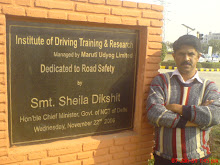Elephants in Kerala culture opedia
From Wikipedia, the free encycl
Jump to: navigation, search
This article or section needs copy editing for grammar, style, cohesion, tone or spelling.You ca
n assist by editing it now. A how-to guide is available. (April 2007)
This article has been nominated to be checked for its neutrality.Discussion of this nomination can be found on the talk page. (December 2007)
An elephant named Sri Hari during Sree Poornathrayesa temple festival, Thrippunithura.
Mahouts helping an elephant to take a bath, Thrissur, Kerala
Mahout helping an elephant to take a bath, Thrissur, Kerala
Mahout and his elephant Guruvayoor, Thrissur, Kerala
The Elephants of Kerala are an integral part of the daily life in Kerala, South India. These Indian elephants are loved, revered, groomed and given a prestigious place in the state's culture. Elephants in Kerala are often referred to as the 'sons of the sahya.' The elephant is the state animal of Kerala and is featured on the emblem of the Government of Kerala.
Contents[hide]
1 Elephants in festivals
2 Elephants as Legends
3 Elephants in captivity
4 Caring for elephants
5 Ornaments used for elephants
6 Woman mahout in Kerala
7 Devices used to control elephants in Kerala
8 Books to read
9 See also
10 External links
//
[edit] Elephants in festivals
a mahout with his elephant, Thrissur, Kerala
Elephants standing during Thrissur pooram festival in Kerala state of south India.
Almost all of the festivals in Kerala include at least one richly caparisoned elephant. Elephants carry the deity during annual festival processions and ceremonial : circumambulations in the temples. The temple elephants are decorated with gold plated caparisons (nettipattom), bells, and necklaces. People mounted on the elephants hold tinselled silk parasols (muthukuda) up high, swaying white tufts (venchamaram) and peacock feather fans (aalavattom) to the rhythm of the orchestra.
Most of the Hindu temples in Kerala own elephants, most of which are donated by devotees. The most famous Guruvayur temple in Kerala has more than 60 domesticated elephants, thus the Presiding Deity, Guruvayurappan, is said to be the owner of the world's largest number of domesticated elephants. The world's only Elephant Palace is constructed in Punnathur Kotta, 3 km from the temple, to house the temple's elephants. A famous elephant, named Guruvayur Keshavan, was an elephant of this temple.
Seventeen elephants are engaged for the daily ceremonial rounds to the accomplishment of Panchari Melam in the Koodalmanikyam Temple. The headgear of seven elephants are made of pure gold and rest of pure silver, which is unique to this temple.
Some famous festivals in Kerala are:
Edakkunni Uthram Vilakku[1]
Arattupuzha pooram
Chinakkathoor pooram
Nemmara Vallangi Vela
Trichur Pooram
Uthralikavu Vela
Tripunithara Vrischikolsavam
Chettikulangara Bharani, Mavelikkara
[edit] Elephants as Legends
Caparisoned elephants during Sree Poornathrayesa temple festival.
Caparisoned elephants during Sree Poornathrayesa temple festival. Mahout with his thotti (hook).
Many elephants are featured in the legends of the land. Aithihyamala (or a garland of historical anecdotes) by Kottarathil Sankunni has a few stories about elephants and their legends.
Aranmula Valiya Balakrishnan
Guruvayur Keshavan
Paramelkavu Parameshwaran
Thiruvambadi Chandrashekharan
Edakkunni Arjunan
[edit] Elephants in captivity
Kerala has more than 700 elephants in captivity. Most of them are owned by temples and individuals.[citation needed]
They are used for religious ceremonies in and around the temples. A few elephants work at timber yards.
[edit] Caring for elephants
Caparisoned elephants during Sree Poornathrayesa temple festival, Thrippunithura.
Each elephant has three mahouts, called pappan in the Malayalam language. The most important duty of the mahouts is to bathe and massage the elephant with small rocks, and husk of coconuts.
In the monsoon, the elephants undergo Ayurvedic rejuvenation treatments which include decoctions with herbs, etc. It is called Sukha Chikitsa in the Malayalam language.
Mahouts may be classified into three types, called in the Sanskrit language:
Reghawan: Those who use love to control their elephants.
Yukthiman: Those who use ingenuity to outsmart them.
Balwan: Those who control elephants with cruelty.
[edit] Ornaments used for elephants
Caparisoned elephants during Sree Poornathrayesa temple festival, Thrippunithura.
One of the famous families in Trichur district of Kerala, the Venkitadri family, has made ornaments for three generations, especially for the famous Thrissur pooram or festival. They make gold plated caparisons, umbrellas, alavattam , venchamaram, and necklaces. They decorate 150 elephants with ornaments for temple festivals.
[edit] Woman mahout in Kerala
Elephants in Kerala are trained not to move when Valiya kol (long pole) is kept on him.
Nibha Namboodiri is the first woman mahout in India. She is a zoologist from Kerala state. Now she is moving into the field of elephant welfare.[citation needed]
[edit] Devices used to control elephants in Kerala
In India, and especially in Kerala, mahout use three types of device to control elephants. Thotti (hook) which is 3.5 feet in length and 3 inches thick, Valiya kol (long pole) which is 10.5 feet in length and 5.5 inches in thickness and cheru kol (short pole).
[edit] Books to read
Hasthyaayurvedam (Encyclopaedia of Elephants and Their Treatment).
This book is an encyclopaedia of elephants and their treatment. The original book is in Sanskrit but Vaidyamadham Cheriya Narayanan Namboodiri (present Chief Physician of Vaidymadham Vaidysaala) has translated Paalakaapyam (Hasthyaayurveda) from Sanskrit to Malayalam.
[edit] See also
Kerala
Thrissur Pooram
Guruvayoor Temple
Temple elephants
[edit] External links
Association of elephant lovers to protect elephants.
Mahout manual.
Pooram.
An elephant carrying Thidambu during Thrissur Pooram festival, Kerala, south India.
An elephant saluting Vadakkunathan during Thrissur pooram.
Elephant feeding (Aaanayoottu) in from of Vadakkunnathan Temple, Thrissur.
Caparisoned elephants during Sree Poornathrayesa temple festival.
Caparisoned elephants during Sree Poornathrayesa temple festival.
Caparisoned elephants during Sree Poornathrayesa temple festival.
Caparisoned elephants during Sree Poornathrayesa temple festival.
Caparisoned elephants during Sree Poornathrayesa temple festival.
Caparisoned elephants during Sree Poornathrayesa temple festival.
Caparisoned elephants during Sree Poornathrayesa temple festival.
Caparisoned elephants during Sree Poornathrayesa temple festival.
skip to main |
skip to sidebar

About Me

- K.A.SUBHASH..
- Kadappakkada, Kollam, Kerala Mob: +91 9995604635, India
- i am cool..........